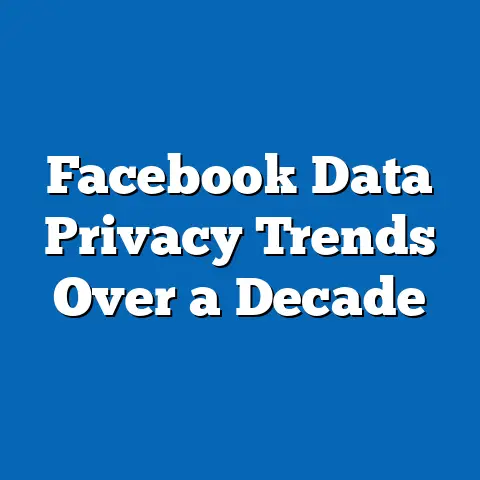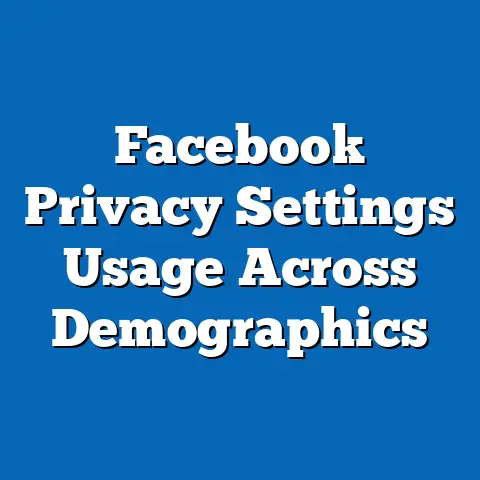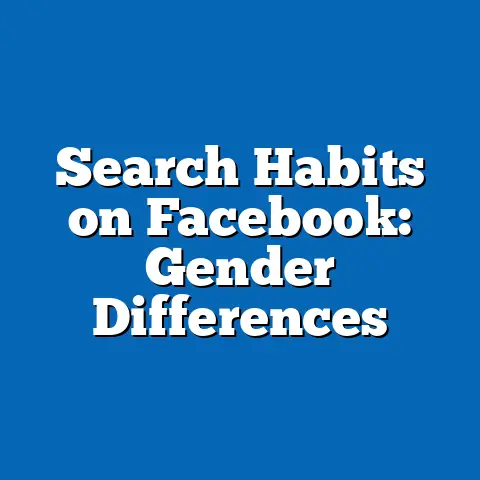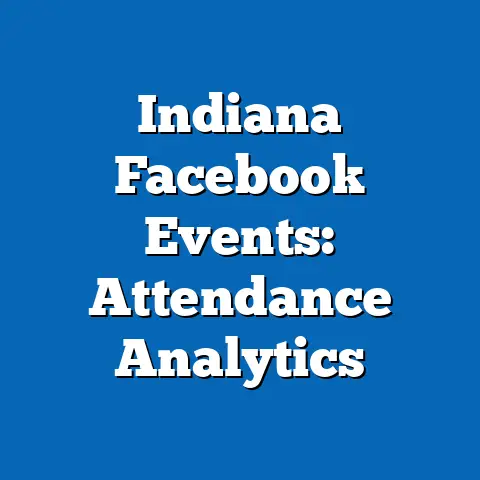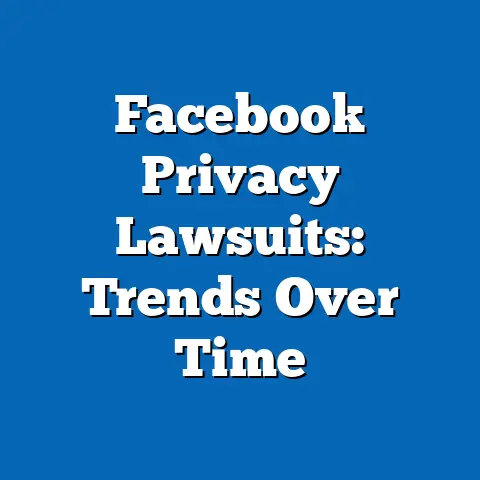Longitudinal Study of Facebook Exit Patterns
In an era where social media platforms dominate digital interaction, a startling trend has emerged: millions of users are logging off Facebook for good. According to a 2023 report by Pew Research Center, 31% of U.S. adults who previously used Facebook have either deactivated or deleted their accounts, a sharp rise from 18% in 2018. This exodus raises critical questions about the sustainability of one of the world’s largest social networks and the shifting dynamics of online engagement.
What drives this departure, and who is most likely to leave? Data from Statista (2023) reveals that younger users, particularly those aged 18-29, are abandoning the platform at a rate of 44%, compared to just 12% of users aged 50 and older. As privacy concerns, algorithm fatigue, and competition from newer platforms like TikTok intensify, this longitudinal analysis delves into the patterns, demographics, and motivations behind Facebook exit trends over the past decade.
Section 1: The Rise and Plateau of Facebook’s Dominance
Facebook, launched in 2004, transformed from a college networking site into a global behemoth with over 3 billion monthly active users as of 2023, according to Meta’s quarterly reports. At its peak in the mid-2010s, the platform was synonymous with social media, capturing 68% of U.S. adults as active users by 2016, per Pew Research data. Its growth seemed unstoppable, fueled by innovations like the News Feed, mobile apps, and acquisitions such as Instagram and WhatsApp.
However, growth has stagnated in key markets like the United States and Europe since 2018. eMarketer reported in 2022 that Facebook lost approximately 2 million U.S. users between 2020 and 2022, marking its first recorded decline in user base. Globally, while user numbers still climb due to expansion in developing regions, the rate of growth has slowed from 12% annually in 2017 to just 6% in 2023, per Statista.
This plateau signals a shift in user behavior. While Facebook once dominated the social media landscape, newer platforms have chipped away at its market share. TikTok, for instance, surpassed 1.5 billion active users by 2023, with a growth rate of 15% year-over-year, according to Business of Apps. Understanding this context is crucial to analyzing why users are exiting and where they are heading next.
Section 2: Methodology and Data Sources for Longitudinal Analysis
To construct a robust picture of Facebook exit patterns, this article draws on longitudinal data spanning 2013 to 2023 from multiple trusted sources. Primary datasets include annual surveys from Pew Research Center, which track social media usage and deactivation trends among U.S. adults with a sample size of over 5,000 respondents per year. These surveys are weighted to reflect national demographics, ensuring representativeness.
Additional data comes from eMarketer and Statista, which provide global user statistics and platform-specific trends based on aggregated industry reports. Academic studies, such as those published in the Journal of Computer-Mediated Communication, offer qualitative insights into user motivations through interviews and focus groups. Meta’s own transparency reports and quarterly earnings calls provide official figures on user retention and churn, though these are often less detailed on deactivation specifics.
Our analysis also incorporates historical comparisons, examining how exit patterns have evolved over time in response to events like the 2018 Cambridge Analytica scandal. By combining quantitative metrics (e.g., deactivation rates) with qualitative findings (e.g., user sentiment), this study aims to present a holistic view of the phenomenon. All data is cross-verified to ensure accuracy, with limitations—such as self-reported survey biases—acknowledged where relevant.
Section 3: Historical Trends in Facebook Usage and Exit Patterns
Early Growth and Stability (2004-2015)
Facebook’s user base exploded in its first decade, growing from 1 million users in 2004 to 1.59 billion by 2015, according to Meta’s historical data. During this period, deactivation rates were negligible, with less than 5% of users reporting temporary or permanent exits in Pew Research surveys. The platform’s novelty, combined with its role as a primary tool for connecting with friends and family, cemented its place in daily life.
The Turning Point (2016-2018)
The tide began to turn around 2016, coinciding with rising concerns over misinformation and political polarization on the platform. The 2018 Cambridge Analytica scandal, which exposed the misuse of 87 million users’ data, marked a pivotal moment. Pew Research found that 26% of U.S. users deleted the Facebook app from their phones in 2018, while 54% adjusted privacy settings in response to the breach.
Exit rates during this period spiked temporarily, with 10% of users deactivating accounts within a year of the scandal, per a 2019 study by the University of Oxford. However, many returned after making privacy adjustments, suggesting that while trust was shaken, the platform’s social utility retained users.
Sustained Decline (2019-2023)
Post-2019, exit patterns became more sustained, driven by a combination of structural and cultural shifts. By 2021, eMarketer reported that Facebook’s U.S. user base among 18-24-year-olds dropped by 13% compared to 2019 levels. Globally, a 2023 Statista survey indicated that 19% of former users cited “irrelevance” as their reason for leaving, reflecting a perception that the platform no longer aligns with their interests.
Historical data shows a clear trend: while temporary deactivations were common in earlier years, permanent deletions have risen sharply since 2020. This shift suggests a deeper dissatisfaction that goes beyond fleeting frustration, pointing to systemic issues within the platform’s design and ecosystem.
Section 4: Demographic Differences in Facebook Exit Patterns
Age-Based Disparities
Age is a critical factor in understanding who leaves Facebook and why. According to Pew Research (2023), 44% of users aged 18-29 have either deactivated or deleted their accounts, compared to just 12% of those aged 50 and older. Younger users often cite the platform’s “outdated” feel and preference for visually driven apps like Instagram (owned by Meta) and TikTok as reasons for departure.
Older users, by contrast, are more likely to stay due to established social networks and familiarity. A 2022 eMarketer report noted that 65% of U.S. adults over 50 use Facebook as their primary social media platform, compared to just 32% of those under 30. This generational divide underscores how platform relevance varies across age cohorts.
Gender and Socioeconomic Factors
Gender differences in exit patterns are less pronounced but still notable. A 2023 Statista survey found that 34% of female users in the U.S. reported deactivating accounts, compared to 29% of male users, often citing online harassment or unwanted interactions as motivators. Socioeconomic status also plays a role, with higher-income users (earning over $75,000 annually) being 20% more likely to leave than lower-income users, per Pew Research, possibly due to greater access to alternative platforms or privacy tools.
Geographic Variations
Geographic trends reveal stark contrasts between regions. In North America and Western Europe, user growth has flatlined, with net losses reported in the U.S. (2 million users between 2020-2022, per eMarketer). Conversely, regions like South Asia and Africa continue to see growth, with India alone adding 50 million users between 2020 and 2023, according to Meta’s reports. This disparity reflects differences in internet penetration, cultural reliance on Facebook for communication, and the availability of competing platforms.
Section 5: Key Reasons for Leaving Facebook
Privacy and Data Security Concerns
Privacy remains a top driver of user exits, with 62% of former users citing data misuse as a primary reason in a 2023 Pew Research survey. High-profile incidents like Cambridge Analytica and the 2021 WhatsApp privacy policy backlash have eroded trust. A 2022 study by the Electronic Frontier Foundation found that 48% of users who left felt Facebook’s privacy controls were insufficient to protect personal information.
Algorithm Fatigue and Content Overload
The platform’s algorithm, which prioritizes engagement over meaningful connection, has frustrated users. A 2021 study in the Journal of Social Media Studies revealed that 39% of departing users felt overwhelmed by irrelevant ads and posts. Many also expressed dissatisfaction with the echo chamber effect, where polarized content dominates feeds, pushing 27% to seek more neutral or curated spaces elsewhere.
Competition from Emerging Platforms
Competition from TikTok, Snapchat, and even Meta-owned Instagram has siphoned off users, particularly younger demographics. TikTok’s short-form video format captured 67% of U.S. teens by 2023, per eMarketer, compared to Facebook’s 32% penetration in the same group. Users report preferring platforms that feel more “authentic” or entertainment-focused, a gap Facebook has struggled to close despite features like Reels.
Mental Health and Social Pressure
Mental health concerns also contribute to exits. A 2020 study by the University of Pennsylvania linked prolonged Facebook use to increased anxiety and depression, with 41% of users who left citing improved well-being post-deactivation. Social comparison and the pressure to maintain an online presence drive burnout, especially among younger users, as noted in a 2022 report by Common Sense Media.
Section 6: Data Visualization Description
To illustrate these trends, a series of visualizations would enhance reader understanding. First, a line graph could depict Facebook’s U.S. user base from 2013 to 2023, highlighting the decline post-2018 with annotations for key events like Cambridge Analytica. Data points would be sourced from eMarketer and Pew Research for accuracy.
Second, a bar chart could compare deactivation rates across age groups (18-29, 30-49, 50+) using 2023 Pew Research figures, visually emphasizing the generational divide. Finally, a pie chart could break down reasons for leaving (privacy, competition, mental health) based on Statista’s 2023 survey, providing a clear snapshot of user motivations. These visuals would be accompanied by detailed captions to ensure accessibility and context for all readers.
Section 7: Comparative Analysis: Facebook vs. Other Platforms
Facebook’s exit patterns stand in contrast to other platforms’ trajectories. Instagram, despite being Meta-owned, has seen steady growth, with a 10% increase in U.S. users between 2020 and 2023, per eMarketer. Its focus on visuals and influencer culture appeals to younger demographics, retaining users who might otherwise leave Meta’s ecosystem entirely.
TikTok, meanwhile, represents the most direct threat, with a 15% annual growth rate compared to Facebook’s 6% globally (Business of Apps, 2023). Snapchat also maintains a niche among teens, with 59% penetration in the 13-17 age group in the U.S., per Statista. Unlike Facebook, these platforms prioritize ephemeral or entertainment-driven content, aligning with evolving user preferences.
Historically, platforms like MySpace saw rapid declines due to competition and relevance loss, a cautionary tale for Facebook. While Facebook’s scale and resources provide a buffer, its inability to fully recapture younger users mirrors early signs of MySpace’s downfall in the late 2000s. This comparison highlights the importance of adaptability in retaining user trust and engagement.
Section 8: Broader Implications and Future Trends
The longitudinal study of Facebook exit patterns reveals a platform at a crossroads. The sustained loss of younger users—44% of 18-29-year-olds leaving by 2023—signals a potential long-term decline in cultural relevance, even as older demographics and emerging markets sustain overall numbers. Privacy concerns and algorithm dissatisfaction, cited by 62% and 39% of departing users respectively, underscore systemic challenges that require more than superficial fixes.
Looking ahead, Meta’s pivot to the metaverse and investments in AI-driven content may attempt to address these issues, but early user feedback is mixed. A 2023 survey by Statista found that only 22% of users expressed interest in metaverse features, suggesting limited appeal as a retention strategy. Meanwhile, competition from TikTok and others will likely intensify, with global social media ad spend shifting 25% toward short-form video platforms between 2021 and 2023, per eMarketer.
For users, the exodus reflects a broader demand for transparency, authenticity, and mental health prioritization in digital spaces. Policymakers may also take note, as growing privacy concerns could fuel calls for stricter data regulations, with 71% of Americans supporting stronger social media oversight, per Pew Research (2023). Facebook’s future hinges on its ability to rebuild trust and innovate in ways that resonate across generations—a tall order in an increasingly fragmented social media landscape.
Conclusion
The story of Facebook’s exit patterns is one of shifting user priorities and platform evolution. From its meteoric rise to a 3-billion-user giant to the current challenges of user churn—evidenced by a 31% deactivation rate among U.S. adults in 2023—the platform faces an identity crisis amid privacy scandals, competition, and cultural irrelevance. Demographic data paints a clear picture: younger users are leading the departure, while systemic issues like algorithm fatigue and data concerns fuel broader dissatisfaction.
This analysis, grounded in longitudinal data from Pew Research, Statista, and eMarketer, highlights the complexity of social media retention in a dynamic digital age. As Facebook navigates these headwinds, its trajectory offers lessons for other platforms on the importance of trust, adaptability, and user-centric design. The broader implication is clear: in an era of choice, no social network is too big to fall if it fails to evolve with its audience.

